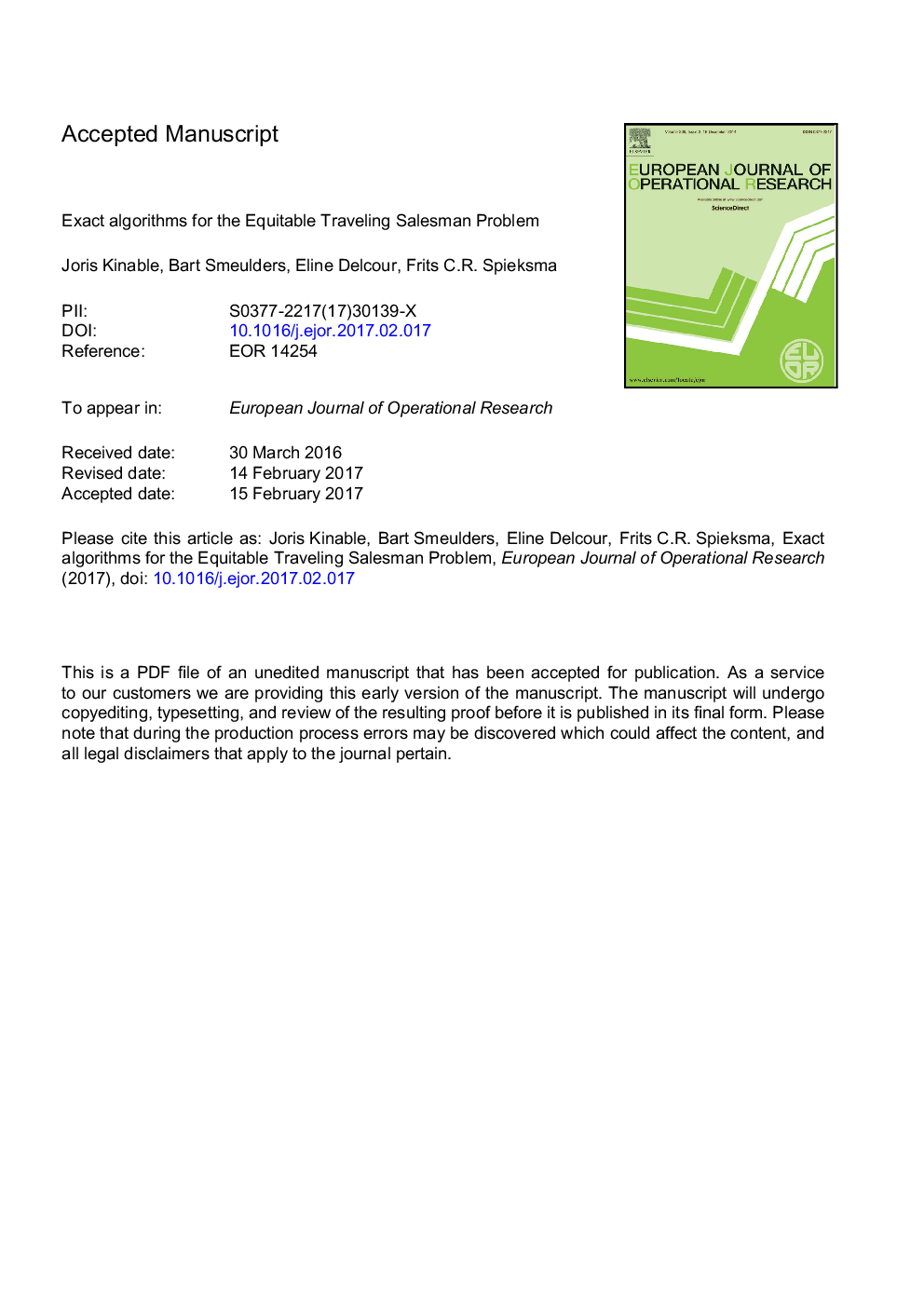| Article ID | Journal | Published Year | Pages | File Type |
|---|---|---|---|---|
| 4959633 | European Journal of Operational Research | 2017 | 20 Pages |
Abstract
Given a weighted graph G=(V,E), the Equitable Traveling Salesman Problem (ETSP) asks for two perfect matchings in G such that (1) the two matchings together form a Hamiltonian cycle in G and (2) the absolute difference in costs between the two matchings is minimized. The problem is shown to be NP-Hard, even when the graph G is complete. We present two integer programming models to solve the ETSP problem and compare the strength of these formulations. One model is solved through branch-and-cut, whereas the other model is solved through a branch-and-price framework. A simple local search heuristic is also implemented. We conduct computational experiments on different types of instances, often derived from the TSPLib. It turns out that the behavior of the different approaches varies with the type of instances. For small and medium sized instances, branch-and-bound and branch-and-price produce comparable results. However, for larger instances branch-and-bound outperforms branch-and-price.
Keywords
Related Topics
Physical Sciences and Engineering
Computer Science
Computer Science (General)
Authors
Joris Kinable, Bart Smeulders, Eline Delcour, Frits C.R. Spieksma,
